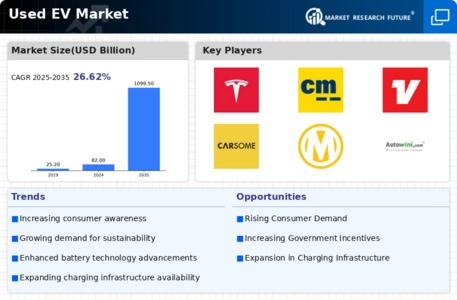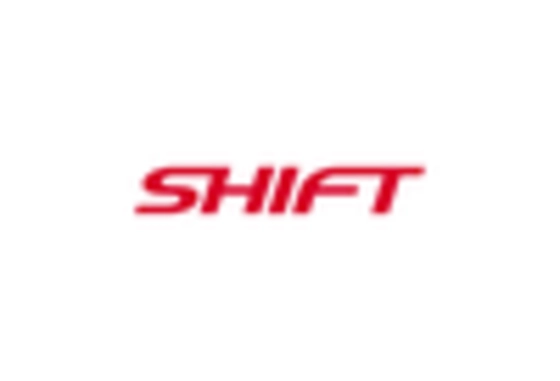Increasing Fuel Prices
Rising fuel prices have a profound impact on consumer behavior, particularly in the context of the Used EV Market. As gasoline and diesel prices continue to escalate, consumers are increasingly seeking alternatives that offer lower operating costs. Electric vehicles, including used models, present a compelling solution, as they typically incur lower fuel expenses compared to traditional internal combustion engine vehicles. Data indicates that the cost of electricity for charging an EV is often significantly less than the cost of gasoline per mile driven. Consequently, this shift in consumer preference towards more economical options is likely to drive demand for used electric vehicles, thereby enhancing the growth trajectory of the Used EV Market. This trend may also encourage manufacturers to focus on producing more affordable used EVs to meet the evolving needs of cost-conscious consumers.
Shifts in Consumer Preferences
Shifts in consumer preferences are significantly influencing the dynamics of the Used EV Market. As more individuals prioritize sustainability, cost-effectiveness, and technological innovation, the demand for used electric vehicles is expected to rise. Recent surveys indicate that a growing number of consumers are willing to consider used EVs as viable alternatives to traditional vehicles, driven by factors such as lower maintenance costs and the desire for environmentally friendly options. Additionally, the increasing availability of charging infrastructure is likely to alleviate concerns regarding range anxiety, further encouraging consumers to explore used electric vehicles. This evolving consumer mindset may lead to a more competitive market, prompting manufacturers and dealerships to enhance their offerings in the Used EV Market, ultimately resulting in a wider selection of models and price points.
Government Incentives and Subsidies
The Used EV Market benefits significantly from various government incentives and subsidies aimed at promoting electric vehicle adoption. Many countries have implemented tax credits, rebates, and grants for consumers purchasing used electric vehicles. For instance, in certain regions, buyers can receive up to 7,500 USD in tax credits for qualifying used EVs. These financial incentives not only lower the initial purchase price but also enhance the overall appeal of used electric vehicles. As a result, the demand for used EVs is likely to increase, thereby stimulating growth within the Used EV Market. Furthermore, as governments continue to prioritize sustainability and carbon reduction, the trend of providing financial support for used EV purchases is expected to persist, potentially leading to a more robust market landscape.
Environmental Concerns and Sustainability
The growing awareness of environmental issues plays a crucial role in shaping the Used EV Market. As climate change and pollution become increasingly pressing concerns, consumers are more inclined to consider the environmental impact of their vehicle choices. Used electric vehicles are perceived as a more sustainable option, as they produce zero tailpipe emissions and contribute to reduced greenhouse gas emissions when charged from renewable energy sources. This heightened focus on sustainability is likely to drive demand for used EVs, as consumers seek to align their purchasing decisions with their values. Moreover, as more individuals recognize the importance of reducing their carbon footprint, the Used EV Market may experience a surge in interest, leading to increased sales and a more diverse range of available models.
Technological Advancements in Battery Technology
Advancements in battery technology are transforming the landscape of the Used EV Market. Innovations such as improved energy density, faster charging capabilities, and longer battery life are making electric vehicles more appealing to consumers. As battery technology continues to evolve, the performance and reliability of used electric vehicles are expected to improve, thereby enhancing their marketability. For instance, the introduction of solid-state batteries could potentially increase the range of used EVs, making them more competitive with traditional vehicles. This technological progress not only boosts consumer confidence in purchasing used electric vehicles but also encourages manufacturers to produce models that are more efficient and cost-effective. Consequently, the Used EV Market is likely to benefit from these advancements, as they may lead to a broader acceptance of used EVs among consumers.

















Leave a Comment